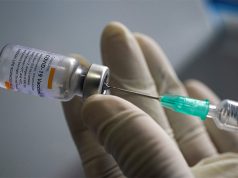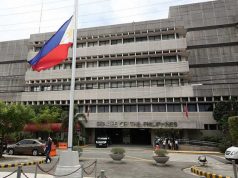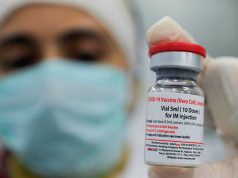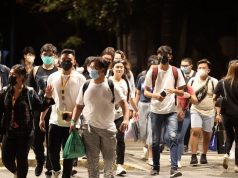
Filipinos looked back on President Rodrigo Duterte‘s approach to the COVID-19 pandemic a year ago after he said that his administration did not fall short in addressing the outbreak in his national address aired Thursday.
“I’d like to just disabuse the mind of na nagkulang tayo. Wala na kayong tiningnan kung hindi ‘yong kag***han ninyo. Hindi tayo nagkulang. Right after the WHO advisory, the following day—day after, basta within 48 hours, we already had the task force, ‘yong task force ngayon,” Duterte said in his April 15 speech.
He was referring to the Inter-Agency Task Force for the Management of Emerging Infectious Diseases created through an executive order of his predecessor, former President Benigno Aquino III.
It aimed to “ensure efficient government response to assess, monitor, contain, control, and prevent the spread of any potential epidemic in the Philippines.”
It was activated last year to address the threats of COVID-19.
“Nandiyan ‘yong task force, nandiyan ‘yong mga doktor natin, nandiyan ‘yong lahat na mga bright na Pilipino, pero noong sinabi ko na na may task force ready tayo and I am imposing the lockdowns here and there, it’s because what the medical people say. Eh abugado naman ako, hindi naman ako doktor,” he said in his speech.
“Eh kung anong sabihin ni Secretary Duque eh, ‘yon ang susundin ko. Siya ‘yong secretary of health eh. Now ngayon, hintay tayo nang hintay,” Duterte added, referring to the supplies of vaccines against COVID-19.
Govt’s approach to pandemic
Some Filipinos online refuted Duterte’s remarks on how his administration did not supposedly fall short in responding to the pandemic by, citing its response before the pandemic was declared.
“First case of COVID-19 in the Philippines was reported around January and February and still, no travel ban, no lockdown, and testing was not prioritized. We could have contained the first case here in our country if we did plans in medical perspective,” a Twitter user said.
Duterte imposed a travel ban on those arriving from Wuhan on January 31 last year, but prior to that, the Chinese city has already started imposing restrictions.
The travel ban was eventually expanded to include travelers from mainland China, Hong Kong and Macau on February 2. At that time, there were already two confirmed cases of COVID-19 in the country.
Another Twitter user also shared screenshots of some news headlines during the first months of the pandemic which involved some of Duterte’s actions and how the country was faring that time.
This regime just can't stop trying to deny reality. pic.twitter.com/Yv8rxw2jqE
— Viktor vonGerdenheim (@ViktorvonGerden) April 15, 2021
On January 30 last year, it was reported that Duterte was “not keen on stopping tourist traffic from China.” It was the day before he imposed a travel ban on passengers from Wuhan, the reported epicenter of the outbreak.
The following month, the president downplayed the COVID-19 threats and said that “everything is well.”
“If there is really a virus going around, why do you have to be hysterical? Why don’t you just go to the hospital and have yourself treated?” Duterte said before.
He also talked about Filipinos’ resiliency and said that they “will overcome the threat of the virus.”
Duterte in the same month also urged the public to travel to local destinations after restrictions were imposed on China, Hong Kong, Macau and Taiwan due to the outbreak.
In March last year, tertiary state-owned Philippine General Hospital took to social media to appeal for medical supply donations such as bottles of alcohol and personal protective equipment for its frontliners.
Bloomberg also reported the country’s scarce number of testing kits—2,000 at that time—and juxtaposed it to the number of people in the archipelago as cases continued to rise.
The Department of Health on that same month denied the need to conduct mass testing in order to trace and isolate all of those infected with the virus, despite it being advocated by the World Health Organization as a means to stop the outbreak.
Up to now, some COVID-19 task force officials still mention that the term refers to testing the entire population instead of testing all close contacts and those suspected of COVID-19 based on their symptoms.
Medical journal BMJ said mass testing for COVID-19 aims “to find people with active infection who are asymptomatic or presymptomatic so that quarantine, and rapid finding and testing of close contacts, can interrupt spread.”
“To be effective, testing needs to be accessible even to the most disadvantaged people in society, and those tested need to receive support, information, and advice from experienced practitioners. Otherwise the system will be chaotic, wasteful, ineffective, and harmful,” BMJ noted.









